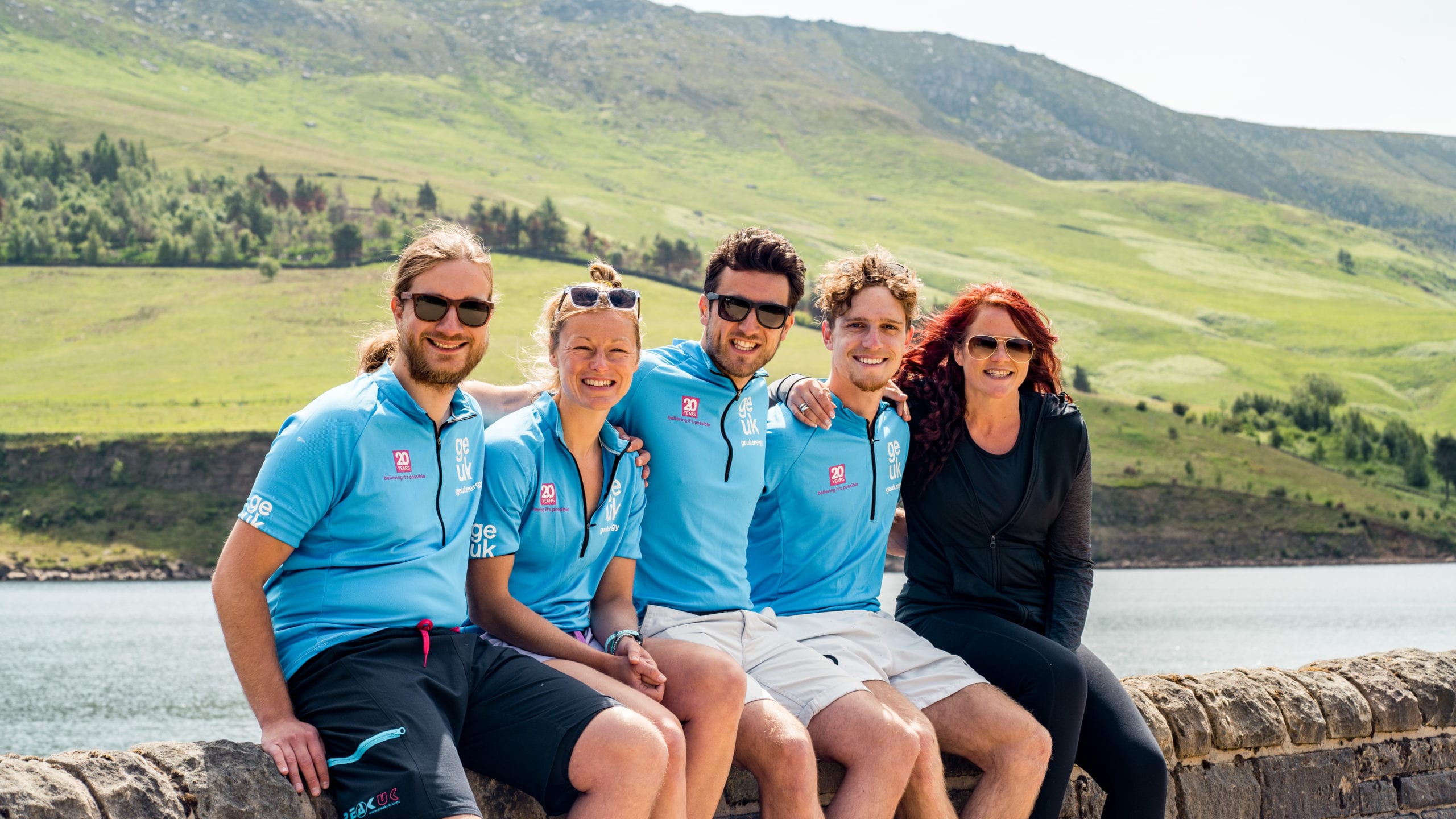
Why does sustainable fashion matter?
Why does sustainable fashion matter?
Eco-conscious buyers are raising awareness and are willing to change their purchasing habits; in doing so, they are putting immense pressure on fashion moguls and brands to enact real change. However, the fashion industry is reaping havoc on the already threatened biodiversity of the world. Despite some movement towards more sustainable clothing choices from the likes of retail giant H&M and Mango, the fashion industry continues to wreak havoc on the already threatened biodiversity of the world. So, how bad is it?
In countries where garments are produced, the untreated wastewater from the industrial process flows directly into rivers, killing biodiversity, obliterating habitats, and making the water we drink toxic. The impact of this contamination is widespread as it courses into the oceans and rivers of the world. The biggest culprit for shedding microfibres is Polyester. When garments made of Polyester are cleaned in our washing machines, they rapidly release microfibres which can enter wastewater plants and sewage systems, contaminating waterways. As microfibres and microplastics are so minuscule that they can easily pass into our oceans, they pose a massive threat to aquatic life and even humans. As a result, tiny organisms like plankton ingest microfibres, mistaking them for algae. Plankton is also a vital source of food and nutrition for many fish and crustaceans. This also represents a threat to our food supply. For many of us, fish is a staple in our diets, and although rare, there is an increasing chance that we too could digest plastic. The impact of ingesting plastics is unknown, but it is expected to be detrimental to our bodies as it releases toxic chemicals.
When microplastic enters richly biodiverse ecosystems, it wreaks havoc. In particular, it depletes the area’s biodiversity and devastates aquatic life habitats. This is also a contributing factor to why coral bleaching is happening even in the most biodiverse coral reefs of the world, like the Great Barrier Reef, which has been genuinely flourishing in recent years. Coral bleaching is believed to be caused by the acidification of the ocean, leading to coral being unable to replenish. So they form weaker skeletons which are more vulnerable to erosion and forceful currents. Not only ecologically devastating, but it is also morally troubling.

Scientists from the non-profit organisation Ocean Cleanup hope to ‘develop and scale technologies to rid the oceans of plastic’ recognise the importance of reducing the amount of plastic waste accumulated over thousands of years. They are committed to removing 90% of plastic from the sea. A waste hotspot they have identified is the Great Pacific Garbage Patch in the North Pacific Ocean. It spans 1.6 million kilometres and is expanding rapidly; it is more critical than ever that the floating plastic is removed. They highlight that if the plastic is left in the ocean, it will only get smaller if left in the vortex of currents, making it even harder to collect. This is perpetuated by rising sea levels and the changing climate.
“As consumers, we have so much power to change the world by just being careful in what we buy.”
Emma Watson
Actress and Activist
The fashion industry has also caused substantial water shortages globally. The plants require an immense amount of water to grow, but it is usually cultivated in warm or dry corners. The striking ecological consequences include the desertification of the Aral Sea, where cotton production has entirely drained the water. This, in turn, damages vital ecosystems, and as all species are interdependent on one another, this compromises the survival of entire populations beyond a single species. Humans have been dying fabric for thousands of years, but since demand has increased, so does the supply; therefore, producing the material has become more industrious. Shockingly, it is estimated that the process of dying cotton, a particularly water-intensive dying process, uses around 125 litres of water per kilogram of cotton fibres. It also relies upon an enormous amount of energy to produce the steam needed for a high-quality finish to the fabric. About 200,000 tons of dyes (worth 1 billion USD) are lost to effluent due to inefficient dyeing and finishing processes. This means that current dyeing practices are wasteful of resources and money and release toxic chemicals into freshwater sources.
Furthermore, vast amounts of chemicals are also used in the fashion industry and tragically millions of premature deaths of farmers have been recorded who use the chemicals to grow the crop needed by the fashion industry to produce the garments and pollution. Fertilisers, a chemical used in farming, are used in the cotton industry and are toxic and heavily pollutant in run-off and evaporation water. This poisons waterways and has a direct impact on agriculture and human populations.
In addition, as the fashion industry is a vast commercial enterprise, its impact on the world is equally widespread. Fifteen million people work within terrible working conditions on landfill sites in Third World countries, where 96% of our waste gets sent. In 2017, at least 46 people were killed by the landslide at the Ethiopia Koshe landfill site. The workers every day face the threat of disease and illness as they scavenge for plastic to make a living.
Consumers consider many factors when looking to move to a sustainable wardrobe. Many companies have moved toward a sustainable future as they recognise that innovation is our way out of this crisis. It is now more critical than ever that those in the fashion industry scrutinise the environmental and social impacts of the production of a garment.
Planet Money explored the journey of a simple cotton t-shirt as it travels across the world from manufacturer to consumer. The journey begins at a cotton farm in the Mississippi Delta in the United States. They revealed that America exports more cotton than anywhere else globally, making it a lucrative overgrowing industry. In the past, America maintained its monopoly in the sector through the slave trade; today, it uses technology. 90% of the raw material used to make a cotton t-shirt is from genetically modified (GM) cotton seeds grown in a lab setting. The seeds are genetically modified to improve yield by gene editing to produce seeds that are resistant to pests and herbicides. As a result, the cotton yield has tripled since the 1950s. Planet Money then followed the T-shirt from the US to Columbia, Bangladesh and Indonesia, where the t-shirts are produced. 4 million people work in the fast fashion industry in Bangladesh alone to survive. In 2013, The Rana Plaza factory in Dhaka, where the Planet Money film crew filmed, collapsed. Tragically, 1,134 people lost their lives that day. Following the event, there have been calls for the protection of workers and better labour conditions. Many unionists and campaigners have highlighted that the industry takes advantage of a desperate nation; others argue that the only way to survive and make a living is to give opportunities to people living in desperate conditions a more stable future. Planet Money then followed the process of shipping and transporting their goods from Colombia, where they are packed, to Miami, where they are delivered to consumers. Their journey documented the story of the people, the industry and the materials behind a humble t-shirt.
Recent media hype has also sparked debates around the ethics of the fast fashion industry. Molly-Mae Hague, influencer, love islander and creative director at PrettyLittleThing, has been criticised for her comments on the Diary of A CEO podcast with Steven Bartlett. She emphasised her individualistic view because “Beyoncé has the same 24 hours in the day that we do” and “you can go in any direction” in your life. She continued to say that “we all have the same 24 hours in the day.” Then suggested that “If you want something enough, you can achieve it; it just depends on what lengths you want to go.” Implying that the reason that people are in financial struggle is their problem. But crucially, following the subsequent protesters at many of PrettyLittleThings high profile events, comparisons were drawn between Molly-Mae’s astonishing seven-figure salary and that of PLT’s garment workers. Many workers in the fast fashion industry spend their time in terrible working conditions, long hours in sweatshops and receive low pay of £7,280 per year, a fraction of Molly-Mae’s wage.

Companies like Patagonia, Fjällräven Kånken and Apple are the pioneers leading an example for a more ecologically viable industry. They are adopting a more sustainable process of manufacturing their products. This is incredibly exciting, and the consumer’s engagement and fascination with this new concept are immense; sustainable fashion has now become the zeitgeist. However, there must be more awareness and education around identifying if a product is truly sustainable and ecologically viable. Many companies are jumping on the opportunity to market themselves as ‘net-zero’ or ‘sustainable’ when this is simply a false claim that is misleading and acts as a distraction to the consumer. These types of companies are taking advantage of the move to a more green future and spreading misinformation about their products being environmentally sound.
However, it must be recognised that the innovation within the textile industry has given rise to new fabric and a movement that incorporates creative, sustainable and ethical design and production. For instance, ECONYL is a fabric made from recycled nylon. It uses synthetic waste from ocean plastic, fishing nets, and waste fabric formed into ECONYL. It does not require much water in the growing process and has comparable properties to nylon but is more economical. Hemp has also become incredibly popular among eco-conscious consumers; it is trendy and hipster. Hemp is one of the most eco-friendly fabrics around. High yielding and growing to support the soil requires significantly less water than cotton. It absorbs carbon dioxide from the atmosphere. Likewise, it is naturally sun protection and anti-microbial. In a similar space, Scoby Leather is made from Kombucha. It does not require animal products, is biodegradable, requires zero heavy metals and other tanning chemicals, and is significantly cheaper than genuine leather.

These new materials have made their way to the public domain through the broader use of them by designers and fashion brands advertising these sustainable textiles. In collaboration with Italian Wineries, the multinational clothing store H&M has created a groundbreaking new fabric that uses the waste from winemaking and turns it into an attractive, high-quality alternative to leather. H&M has revealed that Vegea™ as well as being free of solvents and animal friendly; no heavy metals are used in the production of the product, so it is genuinely sustainable. They have also launched a range of sustainable fashion collections ranging from Circulose® to Orange Fibre. Like, Vegea™ and Orange Fibre are derived from the fruit as their raw material. Producing Orange Fibre is very similar to viscose, a semisynthetic textile with a biomaterial at its core. It takes the by-products of the citrus juice industry and is repurposed into fabric by extracting cellulose from the pulp and orange peel. There is certainly not a short supply of the raw material as in Italy 700,000 tons of it is produced each year. Unlike most sustainable fashion brands, they are very affordable for most consumers; this is crucial given the rising cost of living.
Sustainable fabrics have even made their way to the catwalk; Stella McCartney launched a collection of garments made from vegan, lab-grown, Mylo™ environmental and animal-friendly leather. Mylo™ is a bio-based leather made from mycelium. It takes days for the mycelium to grow so that it can be turned into leather, unlike cows, which take years to grow and develop high-quality leather. It also reduces the amount of land needed globally to graze cattle; this, in turn, reduces deforestation worldwide.
As I have expressed, there is a global problem that has been fuelled by the growth of the fast fashion industry globally. There has been an increase in demand mainly from Western society because, at its core, fast fashion is all about the garments being affordable, but this comprises ethics and sustainability. Therefore, to combat the growth in this industry, many have sought alternatives. Many people have begun to explore online marketplaces like Vinted, a pre-loved, second hand and new clothing exchange service. There are currently 45 million users of Vinted worldwide, and their user base is growing. In America especially, there has been a growing trend of people shopping at ‘thrift stores’ or, as they are more commonly known here in the UK, ‘charity shops.’ Many companies have recognised this opportunity to move to produce sustainable garments, such as my favourite clothing brand, Lucy and Yak, known for their quirky designs and seriously comfortable dungarees, which have seen an enormous increase in sales. I recently discovered that Eco-Age, a company well known for its good intentions, ‘progressive sustainability solutions and creative communication’ recommended that people wear their clothes at least 30 times before disposing of or donating them.
Imagine a world where the ocean and aquatic life are free to breathe. We are recycling, and repurposing is commonplace, where innovation leads to a brighter future for the fashion industry and the world. This vision could become our actuality if we all strive for a sustainable future together.
Author
Ellie Meredith (Ellie’s World)
Listen to ep.3 of Mind the Green Space podcast – Sustainability in the Fashion Industry interview with sustainability expert Merryn from the clothing company Bamboo Clothing.
If you wish to be an external blogger in support of Climate Explorers please get in touch > hello@climateexplorers.co.uk


